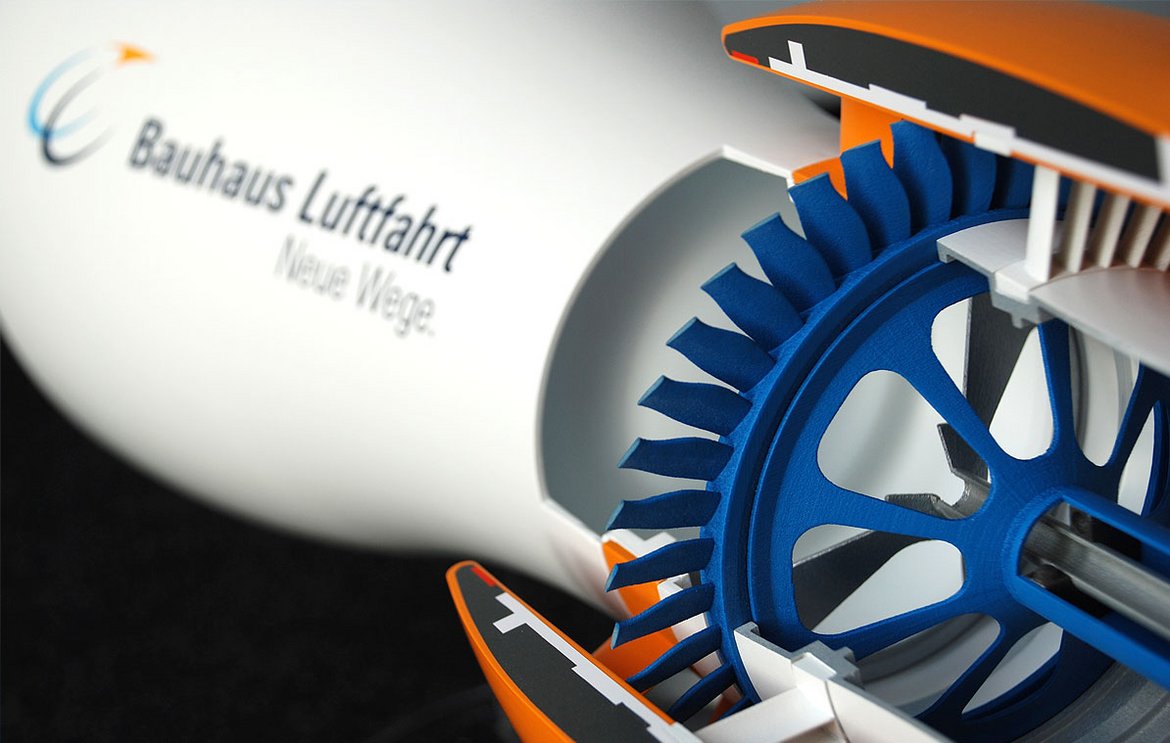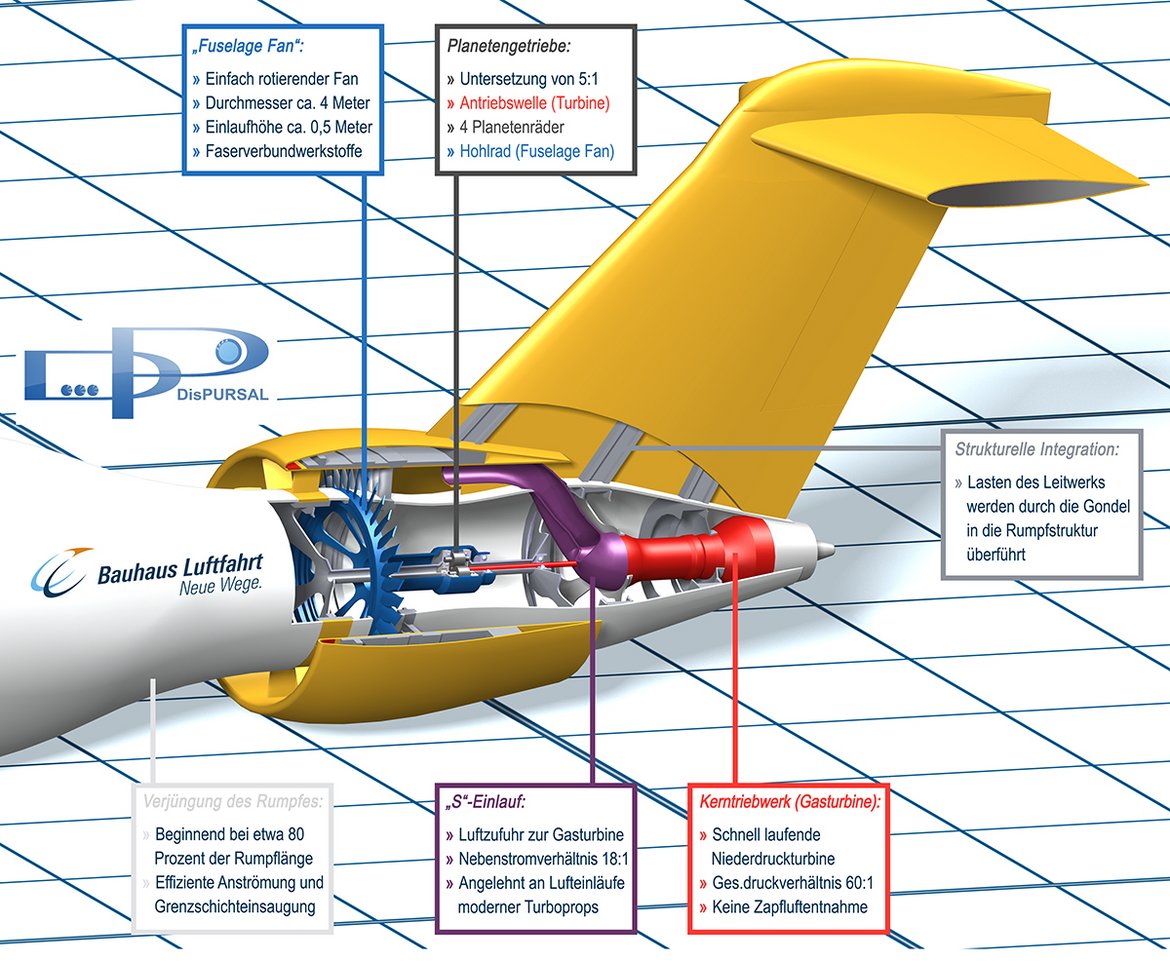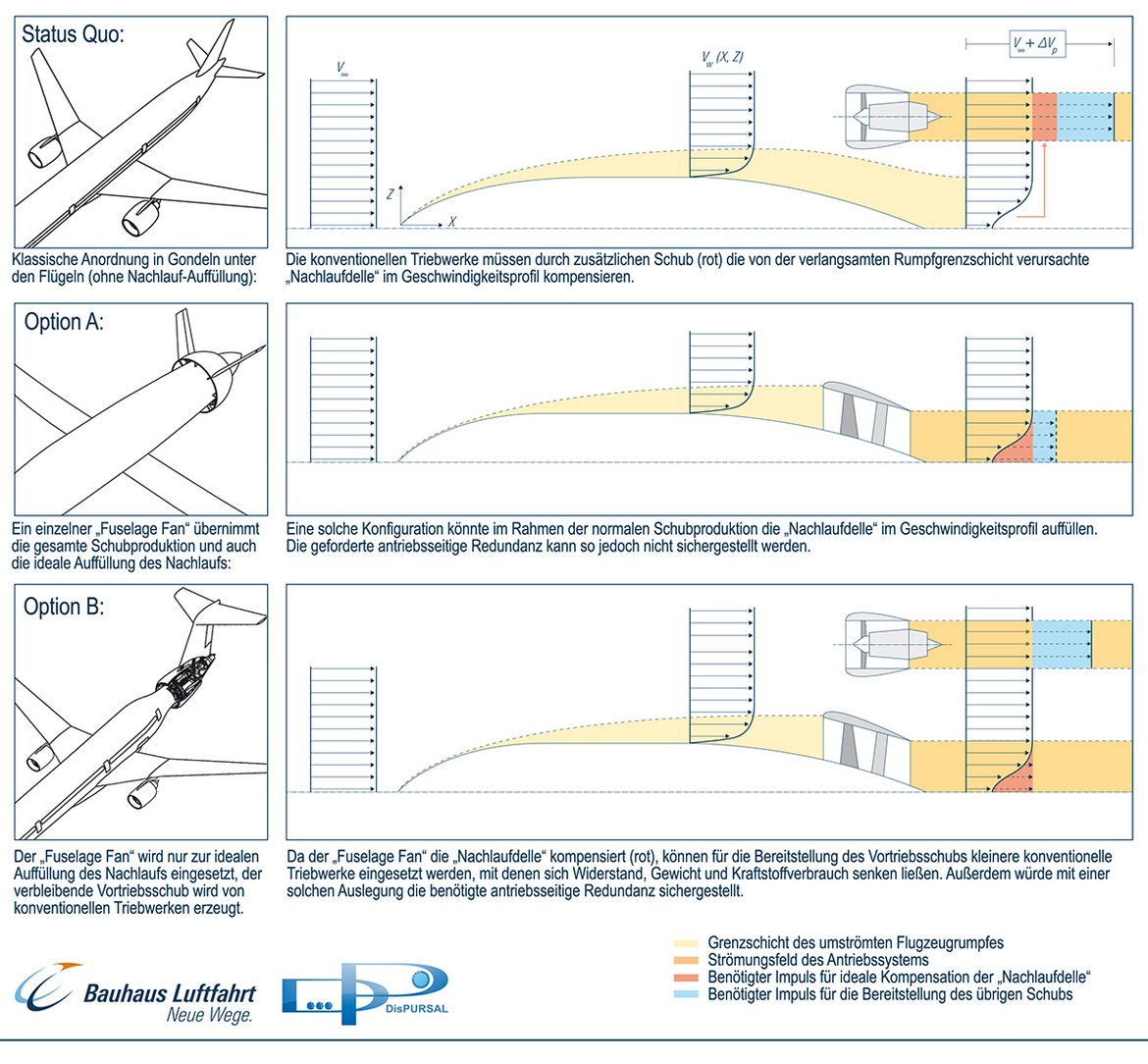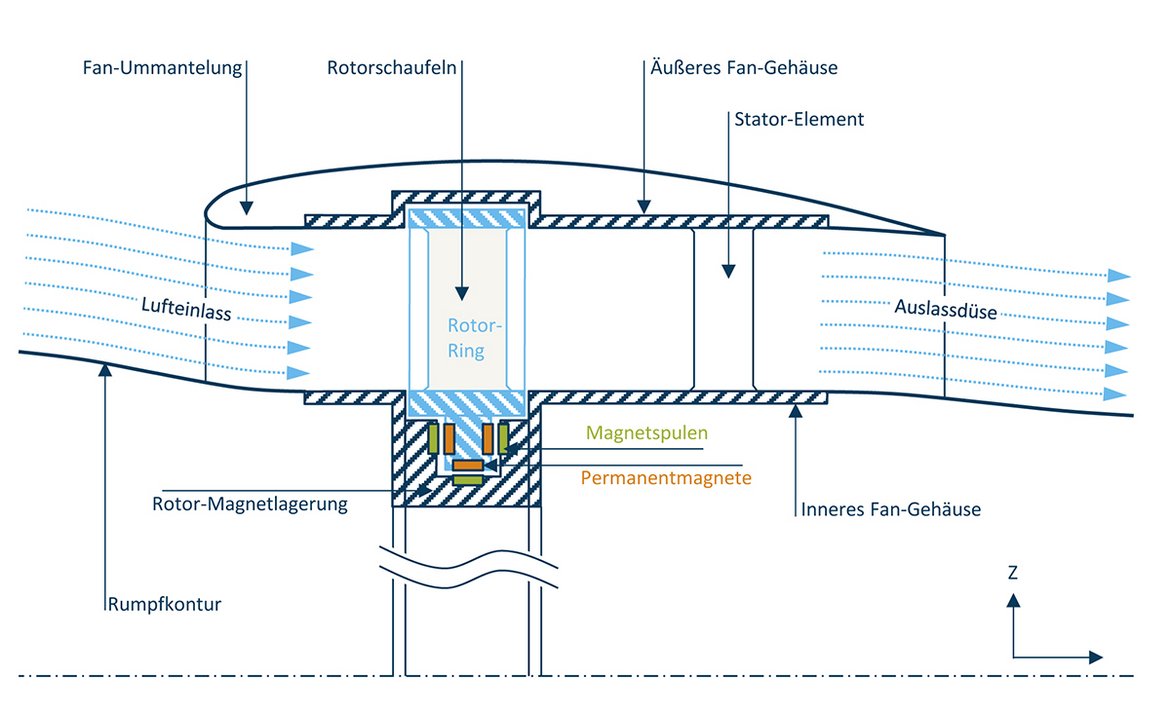In view of the aviation industry’s ambitious “Flightpath 2050” emissions targets, new approaches for propulsion system design and integration are required to further improve aircraft efficiency. One promising idea proposed by academia and industry is to distribute the power of a single core engine to two or even more fans. This would increase the propulsive efficiency due to a larger total fan area while maintaining a moderate increase in fan diameter and weight.
Generally referred to as “distributed propulsion”, this would open up new options for optimisation, such as the introduction of intercoolers and recuperators to improve engine core efficiency. Together with international partners in a project called DisPURSAL (Distributed Propulsion and Ultra-high bypass Rotor Study at Aircraft Level), researchers at Bauhaus Luftfahrt are working on the development of models to quantify the potentials of such distributed propulsion systems at the overall aircraft level.
One of the most promising options for “distributed propulsion” considers a single- or counter-rotating fan encircling the aft-section of the fuselage. This so-called “Propulsive Fuselage” concept intentionally entrains the fuselage boundary layer and distributes the generation of thrust along the viscous wake generated by the fuselage. By installing the fuselage fan in such a way that it “ingests” the fuselage boundary layer, the effective drag of the aircraft may be reduced while the propulsive efficiency of the power plant is improved.
Moreover, the close integration of fans into the airframe lowers nacelle drag and may reduce external noise radiation. Bauhaus Luftfahrt is working on the assessment of the overall benefit of the “Propulsive Fuselage” concept and therefore also takes into account effects that are expected to have an adverse efficiency impact, such as a reduced ram pressure recovery and fan inlet performance degradation resulting from the non-uniform in-flow when ingesting the fuselage boundary layer.
Even with the addition of an extra engine to a formerly twin-engined aircraft, initial analyses performed on the “Propulsive Fuselage” concept yielded just over ten percent improvement in range compared to a conventionally powered reference aircraft. One major finding of this study was that boundary layer ingestion is able to increase aircraft efficiency in such a way that the conventional engines that provide the main thrust could be scaled down in order to reduce drag as well as weight and to increase efficiency of the propulsion system.
The model exhibited by Bauhaus Luftfahrt offers a promising mid-term perspective for the concept of a “Propulsive Fuselage” driven by an advanced gas turbine. However, looking into the distant future, researchers at Bauhaus Luftfahrt see “distributed propulsion” and “Propulsive Fuselage” architectures gaining even greater momentum with a possible breakthrough of electromobility in the aviation sector. Electric motors offer superb scalability and can be controlled via flexible wiring harnesses instead of rigid driveshafts, allowing for their intelligent placement and distribution all over the entire aircraft structure.




